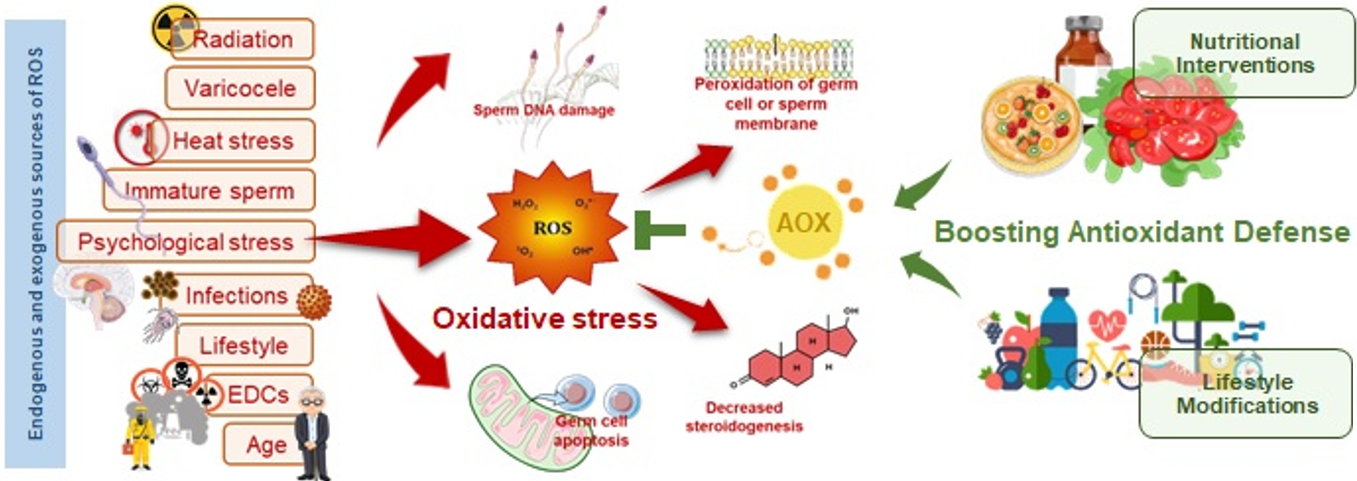Oxidants and antioxidants in male reproduction: Roles of oxidative and reductive stress

DOI:
https://doi.org/10.62110/sciencein.jist.2024.v12.753Keywords:
antioxidants, male infertility, reactive oxygen species, oxidative stress, varicoceleAbstract
Oxidative and reductive imbalances critically impact male reproduction, necessitating a balance between pro-oxidants and antioxidants for sperm health. This paper elucidates the roles of reactive oxygen species (ROS) in male fertility. Moderate ROS levels aid physiological events like sperm capacitation and acrosomal reaction, while excessive ROS leads to oxidative stress (OS), impairing sperm quality and DNA integrity. Intrinsic antioxidant mechanisms in the male reproductive tract, including enzymes like superoxide dismutase (SOD), catalase, and glutathione, are paramount in neutralizing excess ROS, consequently shielding sperm from oxidative harm. External factors, individual lifestyle decisions, and particular medical conditions can offset the pro-oxidant-antioxidant equilibrium, leading to heightened OS and reduced male fertility potential. On the other side, reductive stress, albeit less examined, is also significant in male reproductive outcomes. Overabundance of antioxidants can create a reductive environment that adversely affects sperm functionality. This article accentuates the significance of preserving this balance for protecting male reproductive health and underlines potential modalities for addressing imbalances in oxidative-reductive stability.
URN:NBN:sciencein.jist.2024.v12.753
Downloads
Downloads
Published
Issue
Section
URN
License
Copyright (c) 2023 Pallav Sengupta, Sulagna Dutta, Tulay Irez

This work is licensed under a Creative Commons Attribution-NonCommercial-NoDerivatives 4.0 International License.
Rights and Permission







